After three years of research, the CSIRO has released striking visualisations showing how Ballina went underwater on March 3, 2022 in the region’s worst flood disaster in living memory.
The animated computer-generated images form part of an advanced hydrodynamic model that traces the movement of floodwaters across the Northern Rivers catchment from February 22 to April 15, 2022.
Covering more than 7,000 square kilometres, the model offers unprecedented insight into the cascading impacts of extreme rainfall across key rivers, creeks and towns, including Ballina, which copped the full force as floodwaters surged downstream.
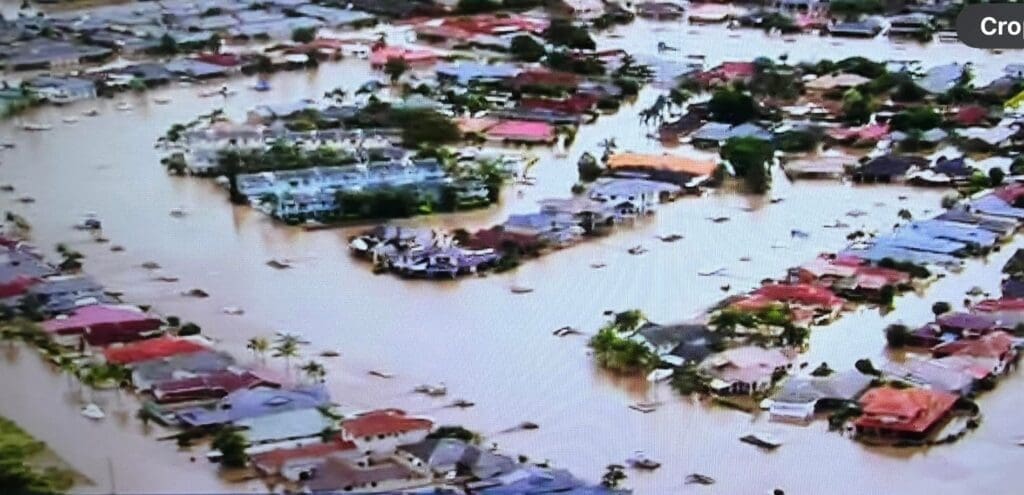
Engineering Solutions Now in Focus
Federal Page MP Kevin Hogan, who helped secure funding for the modelling project, said the release marks a turning point in the conversation around flood mitigation.
“CSIRO’s hydrodynamic model shows how engineering solutions can lower future flood levels in our community,” Mr Hogan said.
“We need to be looking at options like dry retention basins to hold water back temporarily and ways to let floodwater escape more quickly.
“A scenario worth modelling is how we can reduce future flood heights by up to two metres.”
“After the 2022 floods, I secured funding to get this model developed.
“This moves us from just talking about flood mitigation to actually delivering it,” he said.
Mr Hogan emphasised the model spans the entire Northern Rivers floodplain covering Bungawalbin Creek through Coraki, Eden Creek through Kyogle, and the Terania, Leycester and Wilsons Rivers through Lismore to Ballina.
“We can’t keep spending billions cleaning up disasters after they happen.
“We need to invest in solutions that make us safer before the next flood comes,” he said.
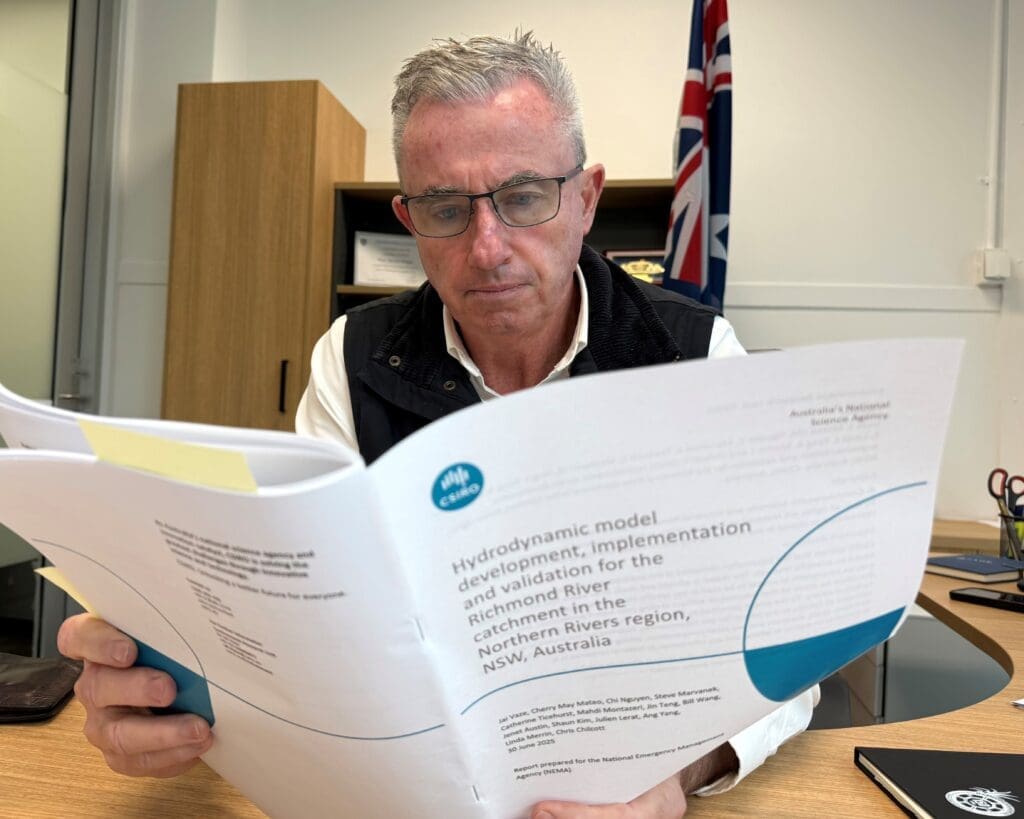
The Cost of Inaction
With estimates suggesting that up to $2 billion would be needed to deliver engineering works capable of reducing flood levels by two metres, Mr Hogan called on the state and federal Labor governments to act.
“The 2022 flood disaster alone cost more than $15 billion. Prevention is far more cost-effective than recovery,” he said. “Now that CSIRO has delivered the data, it’s time for governments to step up and deliver solutions.”
Local Voices: Lismore and Ballina Are Linked
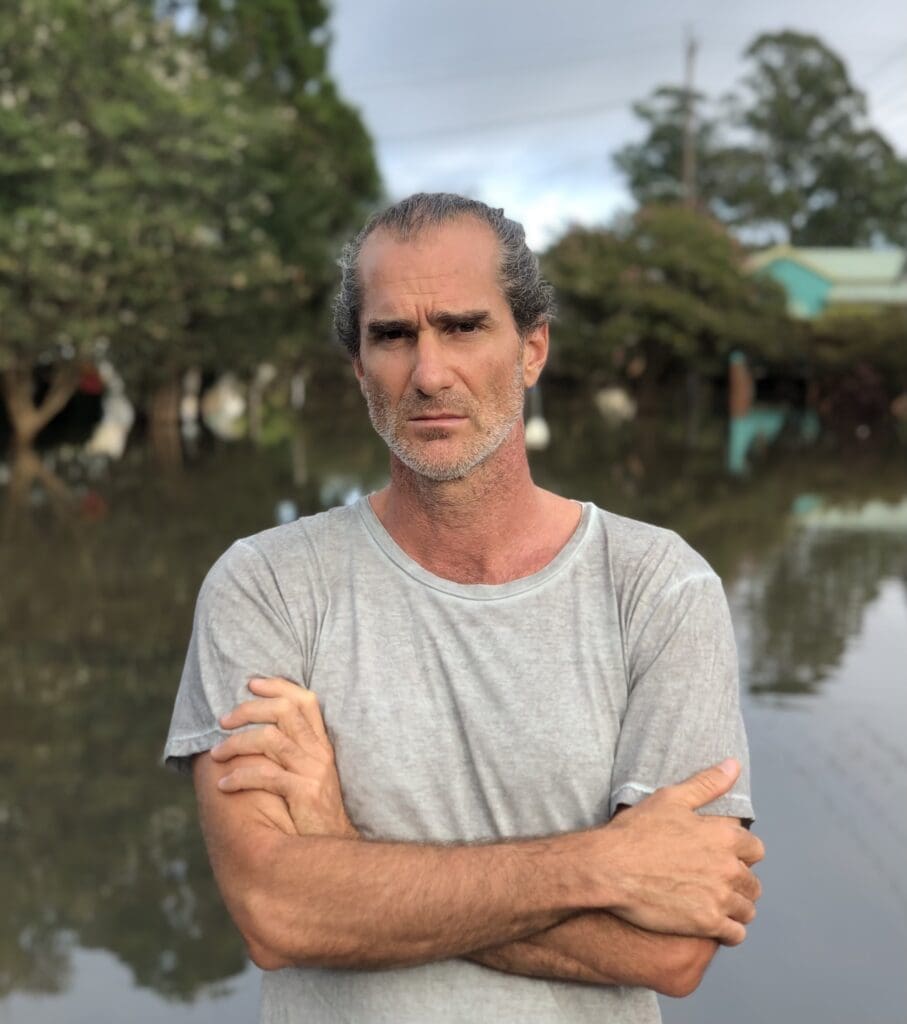
Richard Trevan (above), a member of the Lismore Citizens Flood Review Group, says the model’s release marks the halfway point in the long road to mitigation and that the broader community must resist defeatist thinking.
“This isn’t just about the once-in-a-thousand years, catastrophic 14.4-metre flood,” he said.
“This is about the 150-plus other floods both moderate and minor that we know happen in the space of a century, causing more cumulative damage over time.”
Trevan said the new model gives the community for the first time in 125 years a scientific, accurate tool to simulate different mitigation strategies and test how effective they might be.
“Now we move into public consultation. What combinations of strategies will we test? What impact might each scenario have?
“We finally have the means to run the numbers and get real answers,” he said.
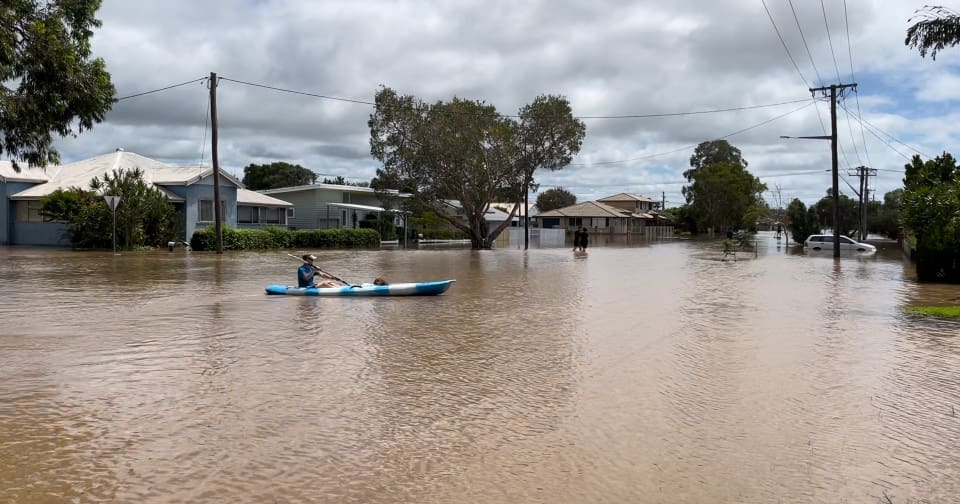
A Political Challenge Ahead
Trevan was frank about the region’s long struggle to secure meaningful government investment.
“From the 1970s, official documents described this region as ‘not politically sensitive.’ The default position has always been: nothing happens,” he said.
He also warned that ignoring Lismore’s plight would have consequences for Ballina, with some 3,000 Ballina Shire residents commuting to Lismore for work including many in critical roles such as in the health sector.
“This isn’t just a Lismore issue. Ballina is where all the water ends up.
“Ballina’s economy, housing and infrastructure are deeply tied to what happens upstream,” Trevan said.
He added that while the model is a breakthrough, the final recommendations are still 12 months away.
“We’re half-way there. If we fail to act now, our kids and grandkids will inherit the cost of indecision.”
Main image: A still from the CSIRO simulation showing the flooding at its peak on March 3 2022

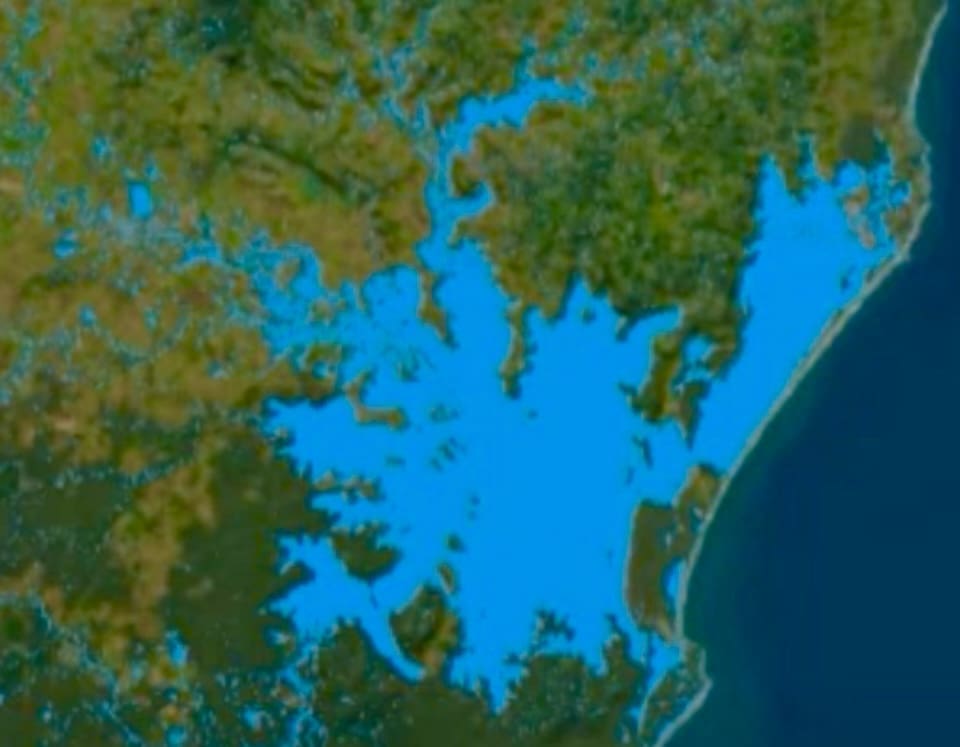

Finally a good news story in flood recovery.